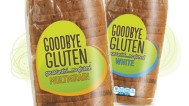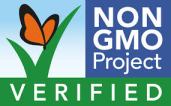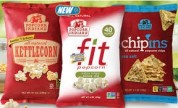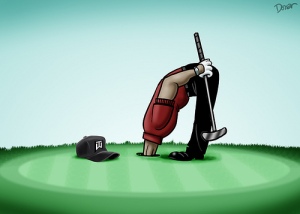Chipotle has been through no picnic recently, with two multi-state E-coli outbreaks, a separate norovirus issue, and widespread negative food safety publicity. However, barring any other major food safety issue, Chipotle will recover quickly and thrive, for five major reasons.
- Consumers LOVE, not like, the brand – Chipotle has extremely high levels of brand
 awareness and brand esteem, well beyond their peers, which yields very high levels of brand equity, from which a setback can borrow. Brand equity is like a bank account: continued positive experiences build brand equity; issues will erode. Consumers have a very strong personal affinity, love and respect for the brand; it’s well beyond a fast-food choice they visit. In fact, Chipotle scores 83 (out of 100) on the American Consumer Satisfaction Index (ACSI), nearly at the top of all fast food brands, which average 77, well beyond Wendy’s (73) and McDonald’s (67).
awareness and brand esteem, well beyond their peers, which yields very high levels of brand equity, from which a setback can borrow. Brand equity is like a bank account: continued positive experiences build brand equity; issues will erode. Consumers have a very strong personal affinity, love and respect for the brand; it’s well beyond a fast-food choice they visit. In fact, Chipotle scores 83 (out of 100) on the American Consumer Satisfaction Index (ACSI), nearly at the top of all fast food brands, which average 77, well beyond Wendy’s (73) and McDonald’s (67). - Chipotle has been transparent in its communication and rigorously improved product safety – Once the second E coli incident occurred, Chipotle’s leadership has aggressively communicated taking responsibility for the problem, sought best-in-class system-wide food safety counsel and implementation, and has invested in redundant measures to ensure food safety. In their most recent quarterly report, Steve Ells, founder, chairman and co-CEO of Chipotle said “We are pleased to have this behind us and can place our full energies to implementing our enhanced food safety plan that will establish Chipotle as an industry leader in food safety.
We are extremely focused on executing this program, which designs layers of redundancy and enhanced safety measures to reduce the food safety risk to a level as near to zero as is possible. By adding these programs to an already strong and proven food culture, we strongly believe that we can establish Chipotle as a leader in food safety just as we have become a leader in our quest for the very best ingredients we can find.” This contrasts with several food companies who either hid or understated their food safety or recall issues and were quick to try to claim it was solved with a reactionary nominal manufacturing change.
- Favorable food safety and public relations are reassuring and reminding consumers to return – Yesterday, both the CDC (Center for Disease Control) and FDA (Food & Drug Administration) called Chipotle’s E. coli outbreaks over. Chipotle will close its stores for several hours on February 8th to have a company-wide meeting reviewing new food safety measures. Internal communication and execution of these improved processes are already in effect in their stores. We also expect Chipotle to resume and increase its compelling advertising, in-store promotion, and couponing programs to welcome concerned consumers back to their stores and resume their unusually high frequency and loyalty of coming back to the stores.
- Chipotle will refine, but stay true to its compelling promise of Food With Integrity –

Chipotle loyalists are drawn to their unique positioning as a higher quality fast food option, strong price/value, and great taste. While their will be refinements in product sourcing and distribution, the product promise of Food With Integrity will remain intact, and strengthened. Consumers will continue to see the Chipotle brand as a superior fast food choice meriting their continued loyalty.
- Same-store-sales will rebound faster than industry averages – Since Chipotle has a stronger and more loyal customer base, traffic will improve more quickly than the industry’s typical 12-18 months to recover same-store-sales performance, as per Credit Suisse estimates. In addition, their marketing and promotional effectiveness
 and sophistication will also accelerate the pace of same-store-sales rebound. We expect a recovery in 3-4 quarters, propelled by an even stronger in-store experience, product quality, favorable public relations, and consumer word-of-mouth.
and sophistication will also accelerate the pace of same-store-sales rebound. We expect a recovery in 3-4 quarters, propelled by an even stronger in-store experience, product quality, favorable public relations, and consumer word-of-mouth.
Lessons learned:
1. Give consumers a superior, differentiated product and a reason to love, not like, your brand.
2. Beloved brands can, and do, recover from quality and public relations issues, if they are quick, contrite, and responsible.
3. Be proactive and vigilant in your product quality processes, pre-prepare how you would mobilize to address a product quality issue.
4. Incent post-crisis consumers to resume confidence in your brand and incent/reward them for their loyalty.











 Hill Cheese (Heini’s)
Hill Cheese (Heini’s)


